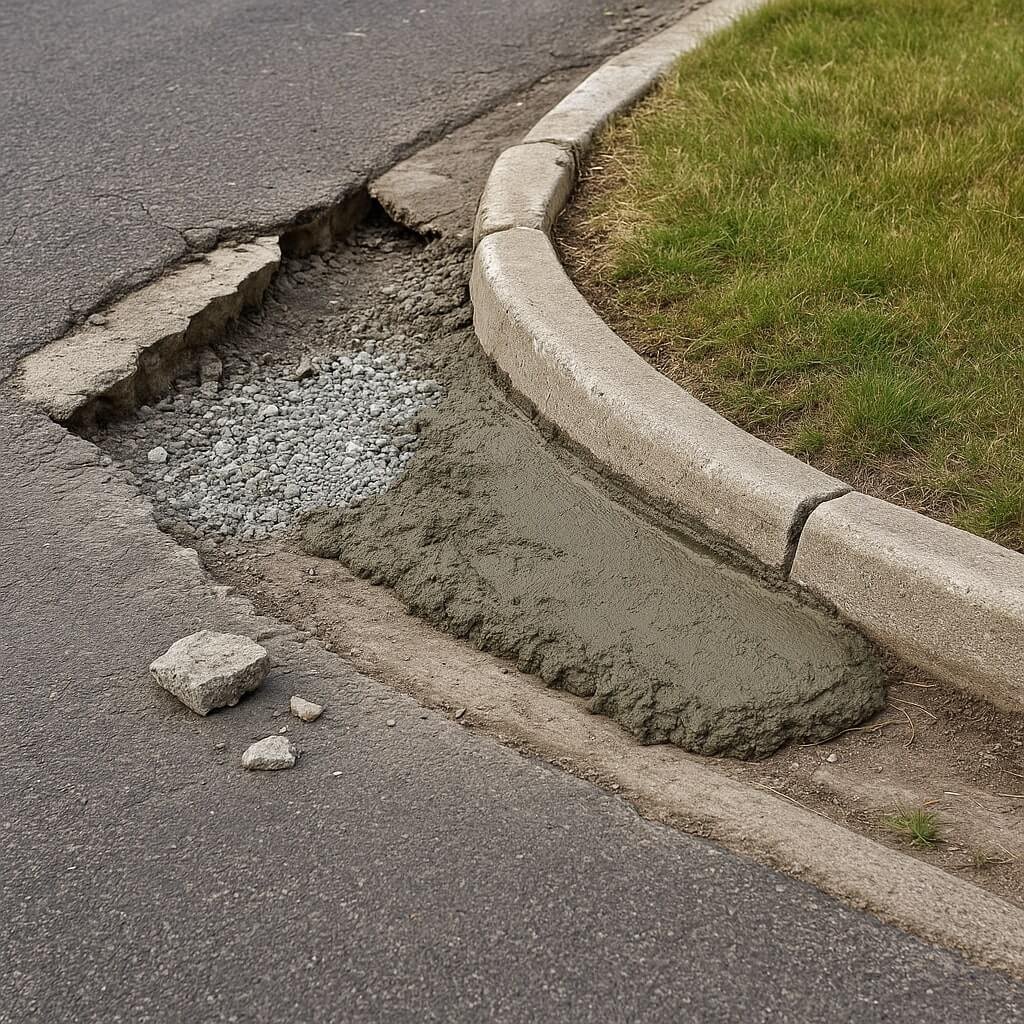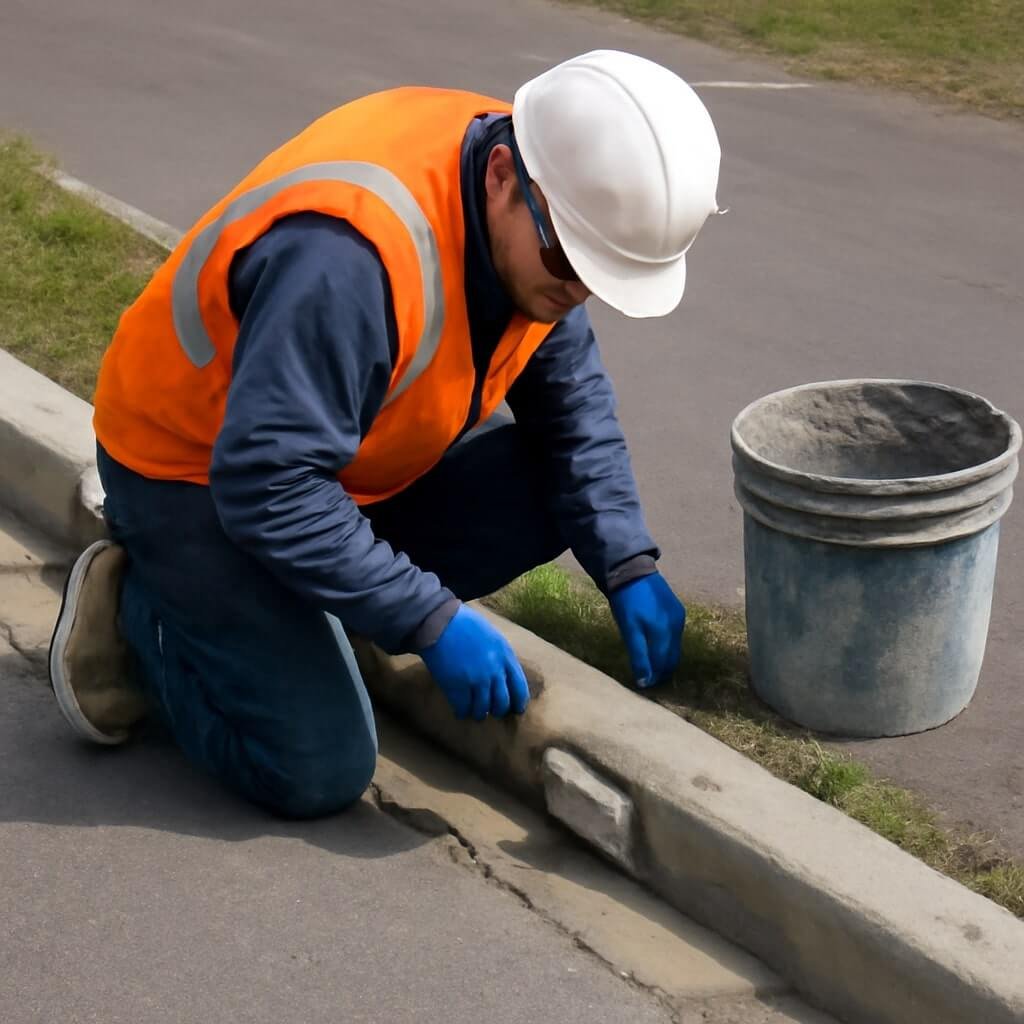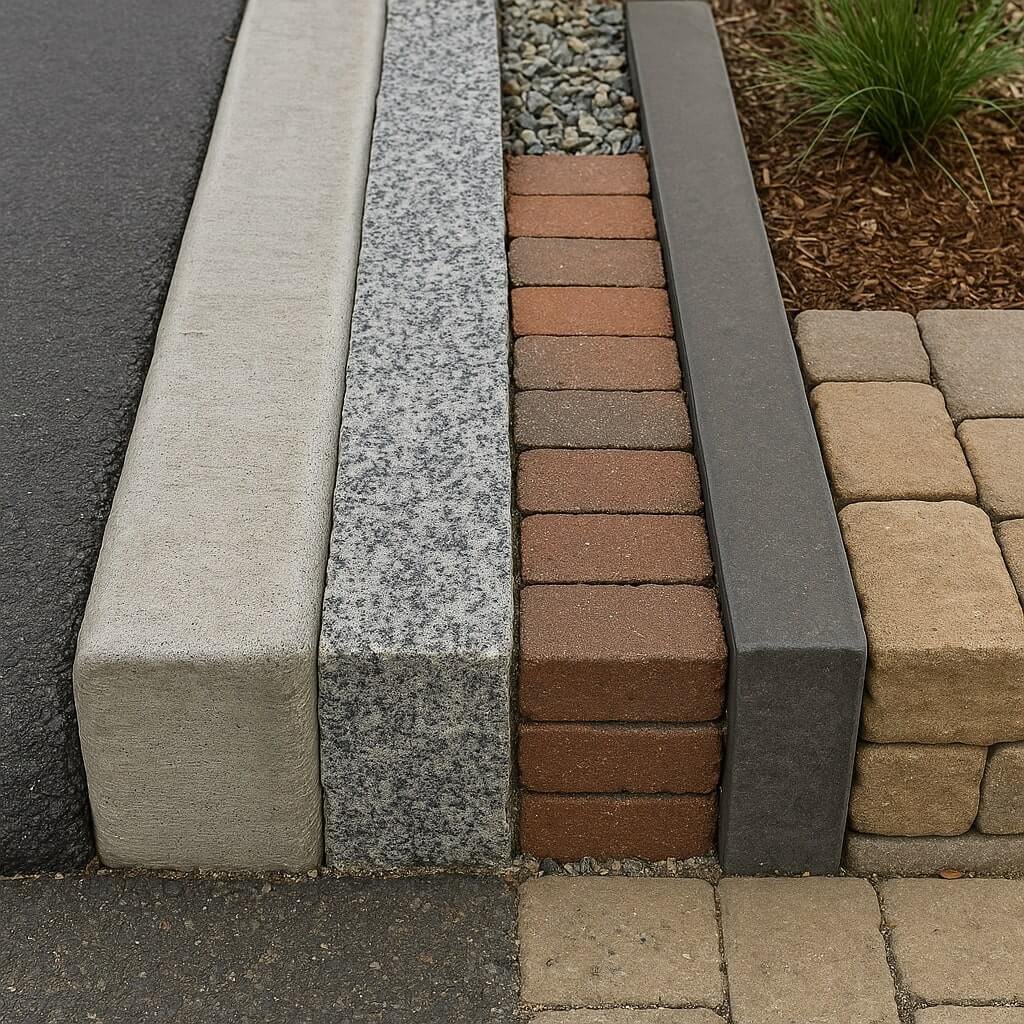Curb damage is often overlooked until it becomes a major liability. Whether it’s a chipped edge in front of your home or a major crack in a commercial parking lot, emergency curb repair can be costly if not managed wisely. This guide is designed to help homeowners, property managers, and business owners understand the key elements that affect emergency curb repair costs, along with money-saving tips to keep repairs affordable and compliant with local standards.
Understanding Curb Damage and Why It Matters

Curbing isn’t just cosmetic. It defines walkways, directs stormwater, supports landscaping, and prevents vehicular encroachment. Damaged curbs can lead to safety issues, liability risks, and even fines from local municipalities. Immediate repair is often essential, especially when damage causes trip hazards or obstructs accessibility.
Common Types of Curb Damage:
- Cracking and Spalling: Due to freeze-thaw cycles, age, or vehicle impact.
- Chipped or Missing Sections: Often caused by snowploughs or vehicle collisions.
- Erosion or Undermining: Water flow undercuts the curb, leading to structural failure.
Factors That Influence Emergency Curb Repair Cost
Emergency curb repair costs can range widely, depending on several variables:
1. Extent of Damage
- Minor Repairs: Small chips or cracks may cost as little as $50–$200.
- Moderate Damage: Replacement of a 2–5 foot section may cost $300–$600.
- Severe or Structural Damage: Full replacement or large-scale fixes can cost $1,000 or more.
2. Curb Type and Material
- Concrete Curbs: Most common and affordable ($15–$25 per linear foot).
- Granite or Stone: Higher-end and more durable, but costlier ($35–$75 per linear foot).
- Precast Curbs: Faster to install, but may have higher upfront costs.
3. Accessibility and Location
- Urban areas often have higher labour rates.
- Hard-to-access areas may require more labour and equipment.
4. Permits and Local Regulations
- Emergency repair may require expedited permits, which can cost an additional $100–$300.
- Some areas mandate ADA-compliant upgrades when curbs are repaired.
5. Labour and Equipment Costs
- Rush jobs increase labour costs by 15%–30%.
- Weekend or after-hours work incurs additional fees.
Money-Saving Tips for Emergency Curb Repair
1. Act Early but Smart
Call for repair as soon as the damage is visible. The longer you wait, the more costly the repair becomes due to widening cracks and erosion.
2. Bundle Repairs
If you have multiple sections of curb needing attention, combining them in one job can reduce per-foot pricing through volume discounts.
3. Use Reputable Contractors
While emergency repairs demand urgency, don’t skip vetting. Hiring an unlicensed contractor can result in subpar work, code violations, and even rework costs.
4. Consider Temporary Fixes
Cold-patch solutions or curb fillers can act as temporary repairs to mitigate hazards until a full replacement is scheduled at regular rates.
5. Leverage Local Programs
Some cities have shared-cost sidewalk and curb programs. Always check if your municipality offers subsidies or free inspections.
FAQs About Emergency Curb Repair
Can I repair the curb myself to save money?
How long does an emergency curb repair take?
Does a homeowner’s insurance cover curb repair?
Will I need a permit for emergency curb repair?
What’s the best way to prevent future curb damage?
Direct vehicle traffic using bollards or markers.
Ensure proper drainage to avoid water undermining the structure.
Final Thoughts
Emergency curb repair doesn’t have to drain your budget. By understanding cost drivers and exploring proactive strategies, you can restore safety, maintain curb appeal, and avoid costly legal exposure. Whether it’s a quick patch or a full replacement, timely action is the key to saving money.
For long-term savings, regular curb inspections and preventive maintenance can significantly reduce the need for emergency fixes. Remember, curb repair is more than concrete—it’s about protecting your property and your wallet.



